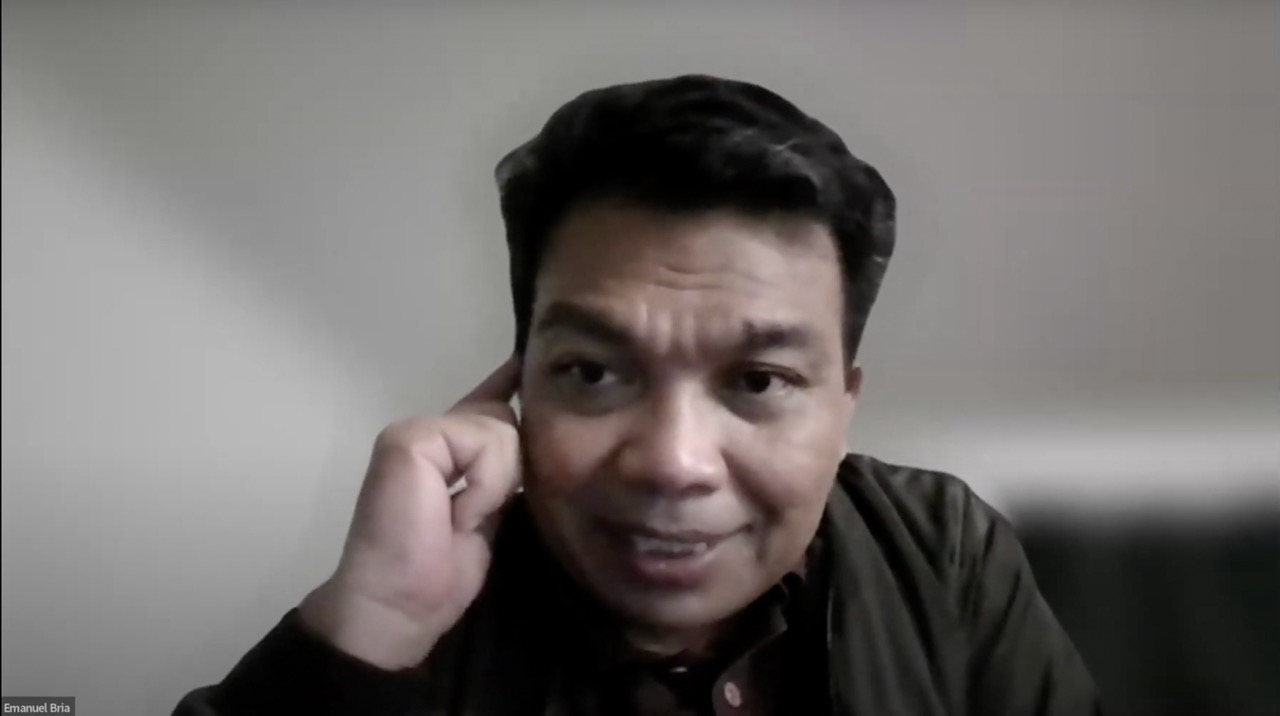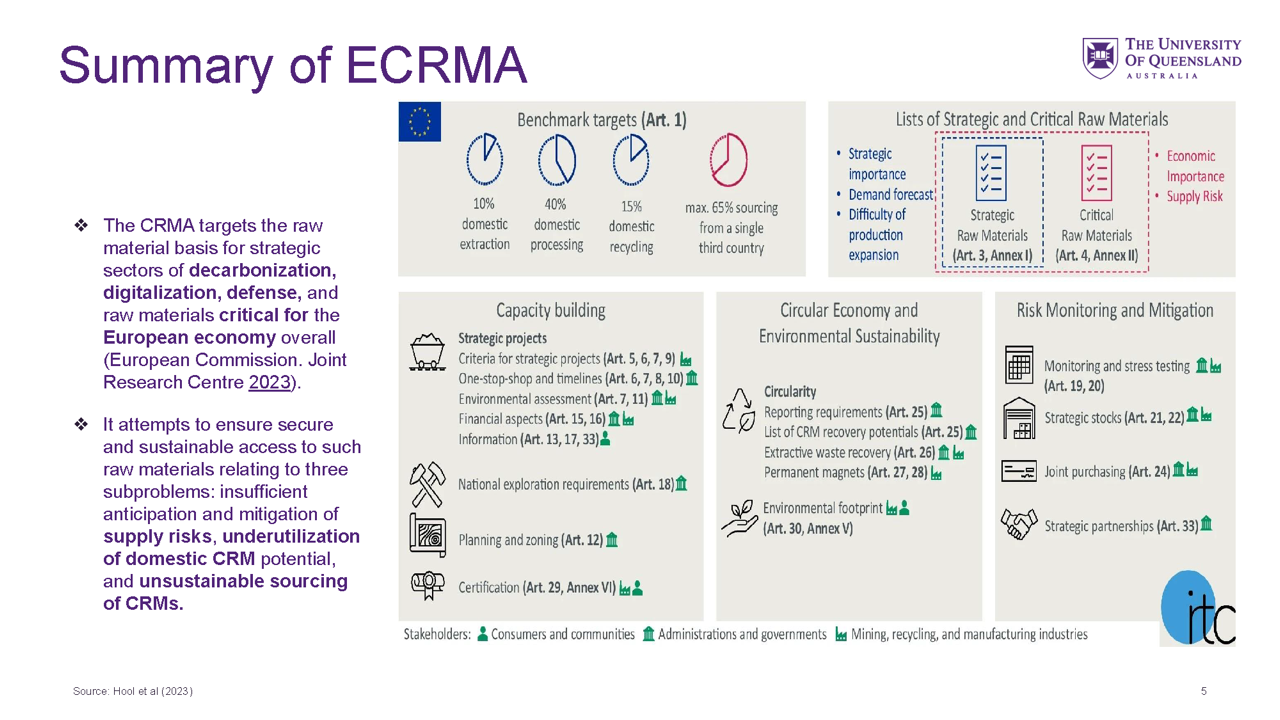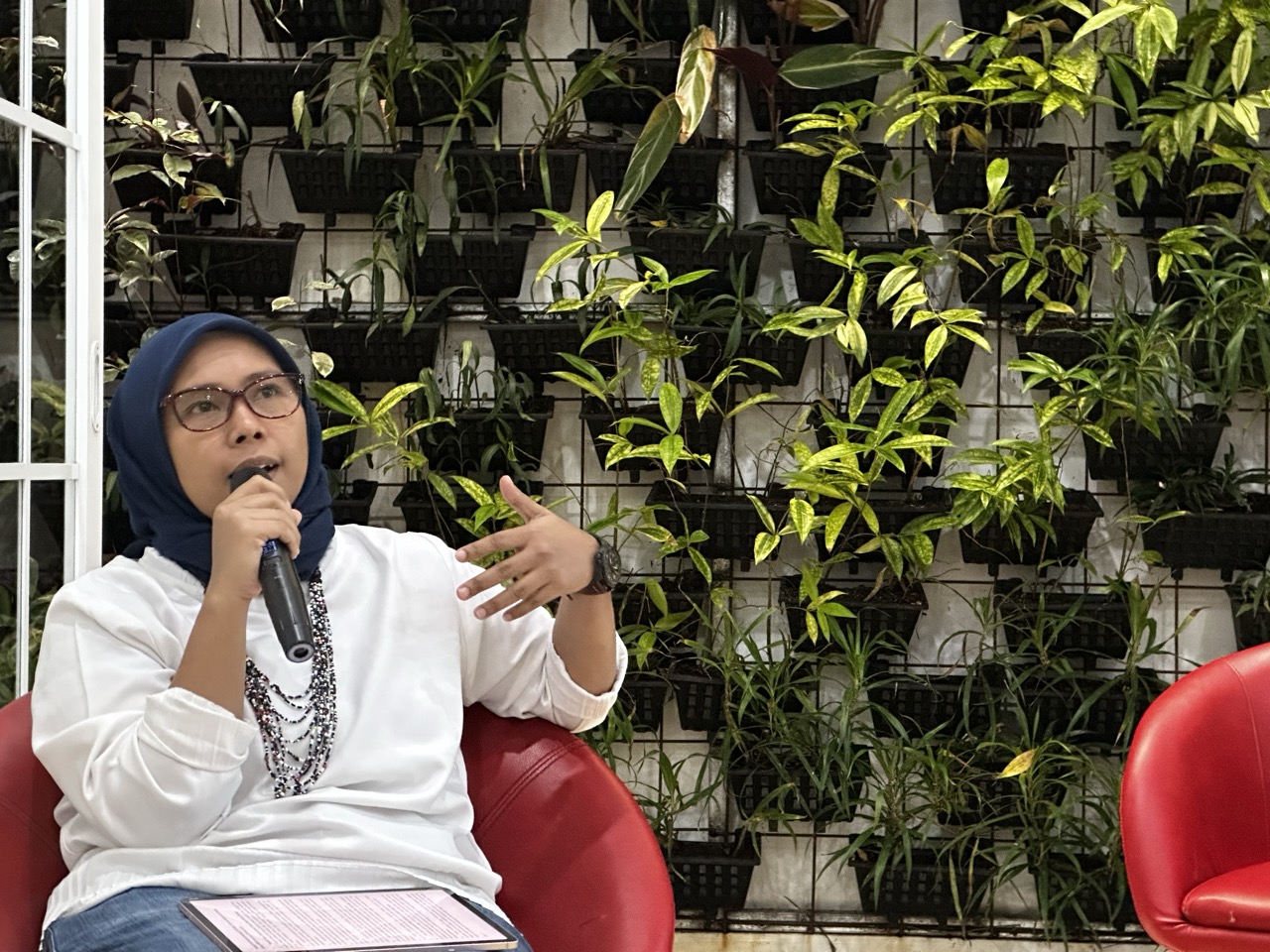Jakarta – The European Union’s Critical Raw Material Acts (EU CRMA) has sparked questions and debates on the impact of global implementation, especially for Indonesia. PWYP Knowledge Forum decided to discuss this interesting topic on March 28, 2024, which aims to dismantle how to deal with the challenges and opportunities that arise from this law. Present as speakers for this event were Emanuel Bria, Mineral Resources Governance Specialist and PhD Candidate for the University of Queensland, and Rachmi Hertanti, researcher from the Transnational Institute.
The discussion was opened by Emanuel Bria, who explained the background and objectives of the EU CRMA. The Act identifies a list of critical raw minerals and strategic raw materials and sets targets for their supply and processing to be achieved by 2030. At least 10% of annual EU consumption goes to extraction; at least 40% of annual EU consumption to processing; at least 15% of annual EU consumption to recycling; and no more than 65% of annual EU consumption of any strategic raw material at any relevant processing stage comes from a single third country. The EU CRMA targets the raw material base for strategic sectors of decarbonization, digitalization, defense, and raw materials essential to the European economy.
The context of the EU CRMA can be understood from the use of international market mechanisms that uphold protectionist policies as part of the EU Green Industrial Plan agenda. In its implementation, the EU CRMA hopes to implement the Act by promoting better environmental impact and achieving sustainability. One of the critical points Bria makes in the background of the launch of the EU CRMA is the need to diversify the sources of critical raw minerals apart from China. Bria also compared critical raw mineral laws from other countries that have similar objectives to the EU CRMA, such as Supply Chain Resilience Initiatives (SCRI), Five Eyes Critical Minerals Alliance (FIVEY CMA), Energy Resource Governance Initiatives (ERGI), and Critical Minerals Mapping Initiatives.
What are the potential challenges and future agenda of the EU CRMA implementation? Bria answered this question with critical points such as inequality and environmental harm. Points included in this section were Green Extractivism, the “Horse-trading effect” in extractive industries where developed and developing countries exchange technology and labor, resource rent-seeking prevalent in less developed areas due to lack of solid governance, and communities affected by pollution, soil erosion, heavy metals, and barren land.
Several laws or regulations in the last 20 years have been related to the environment, society, and governance to address these potentials in Indonesia. However, the problem with Indonesian laws is their enforcement. In Bria’s presentation, the regulatory landscape in Indonesia only covers a fraction of the IFC (International Finance Corporation) standards. Matters such as land acquisition and forced population displacement, indigenous peoples’ rights, and cultural heritage still lack justice. The law enforcement landscape in Indonesia is declining.
Therefore, Bria suggests an agenda that we can move forward with. The first is (1) Building or strengthening existing global cooperation mechanisms for critical minerals governance and (2) Building more transparent supply chains for critical minerals. (3) A negative list of key mineral supply chains should be created to improve the identification and regulation of supply chain environmental and human rights issues.
Moving on to the next session, Rachmi Hertanti tried to explore the EU CRMA from an international relations perspective, including the Green Industrial Policy and Re-design Global Trade Policy. She saw a rising trend of protection policies and resource nationalism in southern countries. So, global northern countries, such as the G7, want to encourage the intensification of multilateral, regional, and bilateral trade cooperation to overcome export restrictions and trade barriers at the international level.
The EU has strategic projects in trade initiatives to secure access to critical raw minerals. These include Trade agreements with places with raw mineral resources, critical raw minerals, strategic cooperation related to raw minerals, and global gateways. One of the efforts that support the EU CRMA is the expansion of the EU Free Trade Agreement. The FTA between Indonesia and the EU is still being negotiated, and some things need to be considered in following this agreement. First is transparency; second is market access and non-discrimination; and third is trade in sustainable energy goods.
Rachmi eventually answered the central question: “What would impact Indonesia if the FTA from the EU CRMA initiation goes ahead?” According to her, three things need to be considered. First, the electricity sector will be liberalized, energy transportation (gas) will be liberalized, the monopoly of state-owned enterprises will be reduced, and tariff issues will be addressed. Second, it objects to Indonesia’s protection policies for building downstream industries, such as the Export Ban Policy, domestic component level (TKDN) obligation, etc. Finally, if Indonesia is not careful in taking strategic steps, Indonesia could be sued.
Based on the presentation of Emanuel Bria and Rachmi Hertanti, it is clear that Indonesia still has a lot of homework to do to mitigate the side effects of the EU CRMA initiation. There is still an urgent need to strengthen the legal system, clarify regulations, and increase law enforcement’s capacity to implement environmental policies effectively. In addition, cooperation among government agencies, the private sector, and civil society also needs to be enhanced to achieve the desired goal of mitigating environmental impacts. With these concrete steps, Indonesia can be better prepared to face the challenges that arise along with changes in global environmental policies.
Writer: Ersya Nailuvar
Reviewer: Aryanto Nugroho


